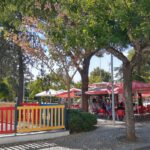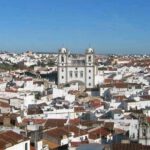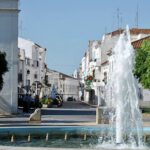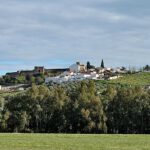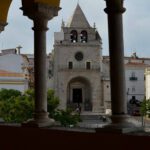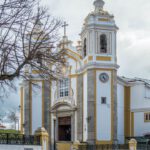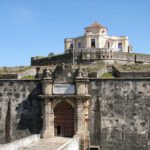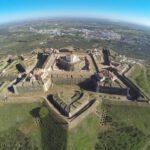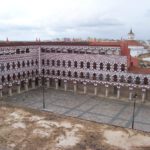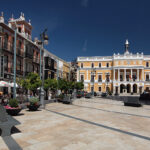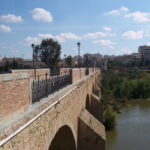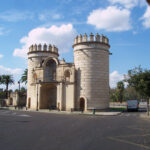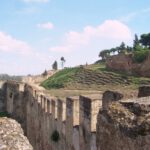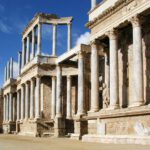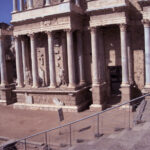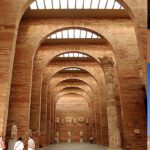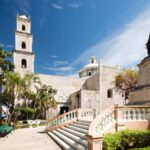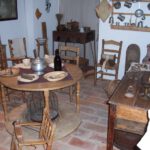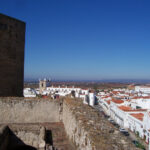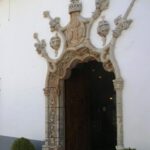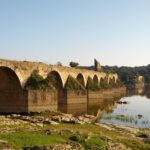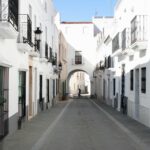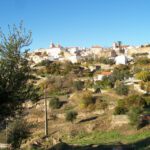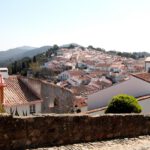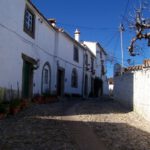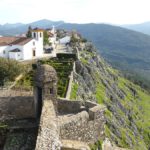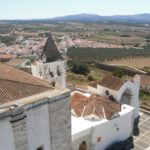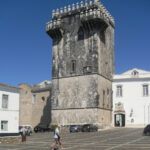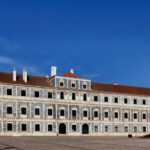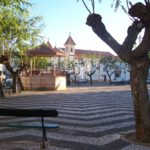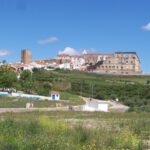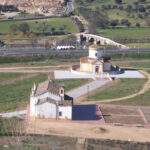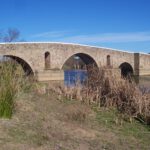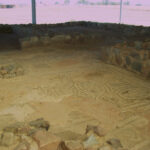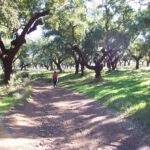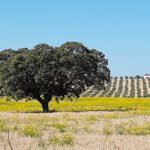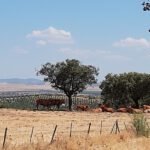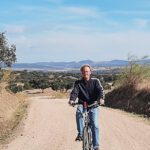Surroundings
Campo Maior
Campo Maior is a beautiful white fortified town (Lord Beresford). In 1732 largely destroyed by a lightning stroke that hit an arsenal inside the castle. The city has been rebuilt completely. In the memorial chapel Capela dos Ossos the skeletons and bones of the deceased can be seen. Other attractions are fountains,churches, the castle with the city walls,the olive museum with its beautiful garden,etnographic museum Aberto, the scientific center/ museum about coffee of the famous brand Delta. There is a museum with tells the history about the flower festival. Furthermore,the large reservoir Barragem do Caia. The town includes the villages : Degolados with the second reservoir Barragem do Abrilongo and the lovely village of Ouguela, built within the walls of the castle with magnificent views. You can see all different kind of birds on the campsite and in the region and one can do some geocaching . With the owner of the campsite you can make an excursion to Campo Maior , she explains everything ,what is really worthwhile .The people are friendly and proud of their Campo maior. Many festivals are organized throughout the year.
Elvas
Elvas is an old fortification, an example of the Portuguese military architecture only 20 minutes from Campo Maior. You should visit the Forte da Graça (= an old military prison) which is fabulous. Furthermore is interesting the church Piedade and the famous Aquaduct Amoreira which is still in use. The citywalls of the old town are completely unchanged and even the plain fields outside the wall are still empty . the old town consists of narrow streets with right in the heart the Praça Republica. In the main square you will find the cathedral Sé de Elvas and a little way up the castle. Elvas came in 2012 on the list of the Unesco for worlds best fortifications . Wellington has lived here for a year preparing for his first battle against Napoleon.
Badajoz
A modern Spanish market town that lies on the border of the Guadiana river. The city was founded by the Moors and has played an important role in the military defence of Castile and the penisula wars (Lord Wellington). The Moorish castle Alcazaba, the Archaeological Museum. The museum of the city from Badajoz “Luis Morales”‘ which explains all about the wars from Badajoz. A big shopping center “El Faro”
Merida
Mérida is the capital of the Extremadura autonomous state. Mérida was founded in 25 BC. by the Roman Emperor Augustus and became the capital of the Roman province of Lusitania. The Roman name of the city was Emerita Augusta, where the current name derives. Mérida became one of the most important cities of the Roman Empire and many monuments from that period are preserved.
* The Teatro Romano. * The Anfiteatro, were battles between gladiators and wild animals were kept. * The Museo Nacional de Arte Romano gives an idea in the thinking and lifestyle of the Roman civilization. * Templo de Diana. * Alcazaba It reminds us of the former presence of Arabs in the city
Olivença
Both from Badajoz and Elvas you can visit the Spanish town Olivença. En route you can see the ruins of the 16th century Ajuda Bridge over the Guadiana river. Formerly the road between Olivença and Elvas ran here. Olivença belonged to Portugal up to 1801; at the Treaty of Badajoz it was given to Spain. Visit the etnographic (folklore) museum Gonzàles Santana. Here it is shown how houses and shops were decorated in the past.
Portalegre,Marvão,
Castelo de Vide
Portalegre, stepwise built agains a slope of the mountain Serra de São Mamede. Portalegre is known for its silk and carpet industries. The old town is partly walled and this is where the shops and the cathedral are situated.The monastery Convento de São Bernardo is mainly decorated with beautiful blue tiles.
From Portalegre a beautiful route is winding through the Serra de São Mamede mountain range into the mountain village of Marvão, located at 850 meters on one of the peaks of Serra de São Mamede with a castle with a beautiful view and houses with architectural elements from the 16th and 17th century. At the foot of the village, the monastery with the church can be found. From Marvão you can drive to Castelo da vide a nice tour were you can visit the jewes quarter
Estremoz, Vila viçosa
Vila Viçosa is an old city known for its marble quarries and the palace of the Duke of Bragança.
Estremoz is knwon for its marble and ceramics. The upper city lies at 425 meters, on top of a mountain where the castle, museum and MunicipalCapela da Rainha Santa Isabel are located. The city has a large square called Praca Marquis de Pombal. The houses, streets and kerbs are mainly made of marble
several cartrips
Nice trips can be made from Camping Os Anjos, driving through the ever diverse landscape to the various villages, each with their own character.Arronches known for its wood and toy museum. Monforte, for its Roman Ruins. Borba, for its marble and viticulture. Here is the Portuguese wine “Borba”orginates. Alter do Chão, a beautiful village with its horse stud-farm Alter Real. Cabeço de Vide, a spa with thermal baths. Crato with the palace Flor da Rosa etc….
Walking and Cycling
Do you rather prefer to walk or do biking and enjoy the environment and nature? This is also possible: we have existing and self made walking tours for you also from the campsite. Alternatively, you can take your bike. Also for biking we have some tours for example to Elvas, Ouguela and many more . In this area you can walk and do biking very well.
Being our guest at our Camping Os Anjos we love to give you more information and tips !


